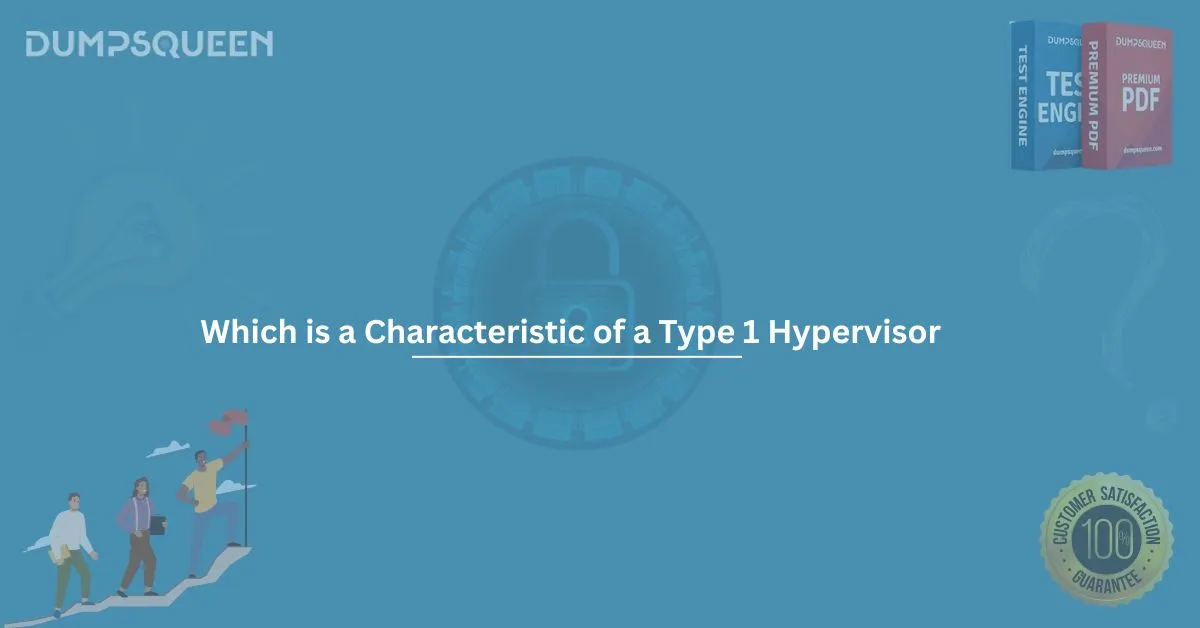The Power of Hypervisors in Virtualization: A Deep Dive for CV0-003 Success with DumpsQueen
Virtualization has revolutionized the way we manage IT infrastructure, enabling businesses and individuals to maximize resources, reduce costs, and scale efficiently. At the heart of this transformation lies the hypervisor—a critical piece of technology that makes virtualization possible. Whether you’re an IT professional gearing up for the CompTIA Cloud+ (CV0-003) exam or simply curious about cloud computing fundamentals, understanding hypervisors is essential. In this blog, we’ll explore what hypervisors are, their types, and why mastering them with a resource like DumpsQueen can set you up for success in your certification journey.
What is a Hypervisor?
A hypervisor, often called a virtual machine monitor (VMM), is software, firmware, or hardware that creates and manages virtual machines (VMs). Think of it as the conductor of an orchestra, coordinating the resources of a physical computer—CPU, memory, storage, and networking—so that multiple operating systems can run simultaneously on the same hardware. Each VM operates as if it has its own dedicated machine, isolated from others, thanks to the hypervisor’s magic.
Hypervisors are the backbone of virtualization, a technology that powers everything from on-premises data centers to sprawling cloud environments like AWS, Azure, and Google Cloud. Without hypervisors, the flexibility and efficiency of modern computing would be unimaginable. For those studying for the CV0-003 exam, hypervisors aren’t just a buzzword—they’re a core concept you’ll need to master.
Types of Hypervisors
Hypervisors come in two main flavors: Type 1 and Type 2. Each has its own strengths, use cases, and implications for performance, making them a hot topic for anyone diving into cloud computing.
-
Type 1 Hypervisor (Bare-Metal Hypervisor):
This type runs directly on the host’s hardware, without an underlying operating system. It’s lean, mean, and built for performance. Examples include VMware ESXi, Microsoft Hyper-V, and XenServer. Because it interacts directly with the hardware, it’s highly efficient and widely used in enterprise environments and cloud computing.
-
Type 2 Hypervisor (Hosted Hypervisor):
This type runs on top of an existing operating system, like an application. Think of VMware Workstation, Oracle VirtualBox, or Parallels Desktop. It’s user-friendly and great for testing or personal use, but it introduces an extra layer (the host OS), which can impact performance.
For CV0-003 aspirants, understanding the distinction between these types is crucial, as the exam emphasizes real-world applications in cloud environments—where Type 1 reigns supreme. Resources like DumpsQueen can help you drill down into these differences with practice questions and explanations tailored to the exam’s scope.
Characteristics of a Type 1 Hypervisor
Type 1 hypervisors are the heavy hitters of the virtualization world, and their characteristics make them stand out:
1) Direct Hardware Access:
Running on bare metal means no middleman. The hypervisor talks directly to the CPU, memory, and storage, squeezing out every ounce of performance. This is why Type 1 is the go-to for mission-critical workloads.
2) Resource Efficiency:
With no host OS hogging resources, Type 1 hypervisors allocate CPU, RAM, and I/O directly to VMs, minimizing overhead and maximizing efficiency.
3) Security and Isolation:
Each VM is sandboxed, isolated from others. A crash in one VM won’t bring down the whole system, making Type 1 hypervisors a favorite in secure, multi-tenant environments like the cloud.
4) Scalability:
Need to spin up 10 VMs? 100? 1,000? Type 1 hypervisors handle large-scale deployments with ease, a key reason they dominate data centers and cloud providers.
5) Management Tools:
Many Type 1 hypervisors come with robust management suites—like VMware vSphere or Hyper-V Manager—streamlining administration and monitoring.
These traits aren’t just technical trivia; they’re the foundation of cloud infrastructure, a major focus of the CV0-003 exam. Studying with DumpsQueen ensures you grasp these concepts deeply, with exam-specific insights that go beyond textbook definitions.
Type 1 Hypervisor in Cloud Computing (Relation to CV0-003)
Cloud computing is all about delivering scalable, on-demand resources, and Type 1 hypervisors are the unsung heroes making it happen. When you spin up an EC2 instance on AWS or a VM on Azure, you’re interacting with a Type 1 hypervisor under the hood (often Xen or KVM, customized for cloud-scale operations). These hypervisors enable providers to host thousands of VMs on a single physical server, ensuring isolation, performance, and flexibility for customers.
The CompTIA Cloud+ (CV0-003) exam tests your ability to deploy, manage, and troubleshoot cloud environments, and Type 1 hypervisors are central to that. You’ll encounter questions about virtualization performance, security configurations, and resource allocation—all areas where Type 1 shines. For instance, understanding how a bare-metal hypervisor handles overprovisioning or live migration can be the difference between passing and failing.
DumpsQueen steps in here as a game-changer. Its targeted study materials break down complex topics like hypervisor deployment in cloud settings, offering practice scenarios that mirror the CV0-003’s focus on practical, hands-on knowledge. With DumpsQueen, you’re not just memorizing—you’re preparing to think like a cloud professional.
Comparison: Type 1 vs. Type 2 Hypervisor
Let’s pit Type 1 and Type 2 hypervisors against each other to see why Type 1 takes the crown, especially for CV0-003 relevance:
1) Performance:
Type 1 wins hands down. By skipping the host OS, it eliminates latency and overhead, delivering near-native performance to VMs. Type 2, reliant on an OS like Windows or Linux, can’t match that efficiency.
2) Use Case:
Type 1 is built for enterprise and cloud environments—think data centers and production workloads. Type 2 is better suited for development, testing, or running a VM on your laptop. For CV0-003, which focuses on professional cloud deployments, Type 1 is the star.
2) Complexity:
Type 2 is easier to set up (just install it like any software), making it beginner-friendly. Type 1 requires more expertise to configure and manage, but that’s exactly the skill set the CV0-003 exam expects you to have.
3) Security:
Type 1’s bare-metal design reduces the attack surface—no host OS means fewer vulnerabilities. Type 2’s dependence on an OS introduces risks, like a compromised host affecting all VMs.
4) Scalability:
Type 1 scales effortlessly across clusters of servers, while Type 2 is typically limited to a single machine. In cloud computing, scalability is king, and Type 1 delivers.
For CV0-003 candidates, this comparison isn’t just academic—it’s a roadmap to exam success. DumpsQueen resources highlight these distinctions with real-world examples and practice questions, ensuring you can tackle any hypervisor-related challenge the exam throws at you.
Why is this Relevant to the CV0-003 Exam?
The CompTIA Cloud+ (CV0-003) certification is designed for IT professionals who want to prove their cloud expertise. It covers cloud architecture, security, deployment, and troubleshooting—areas where hypervisors play a pivotal role. Here’s why hypervisors, especially Type 1, are a big deal for the exam:
1) Deployment and Management:
You’ll need to know how to set up and optimize virtualized environments, a task rooted in Type 1 hypervisor capabilities.
2) Performance Optimization:
Questions about resource allocation, CPU overcommitment, and VM tuning often tie back to hypervisor functionality.
3) Security:
The exam tests your ability to secure cloud infrastructure, and Type 1 hypervisors’ isolation features are key to that.
4) Troubleshooting:
From VM crashes to network bottlenecks, diagnosing issues in a virtualized environment requires hypervisor knowledge.
5) Cloud Integration:
Since cloud providers rely on Type 1 hypervisors, understanding them prepares you for real-world cloud scenarios mirrored in the exam.
Studying for CV0-003 can feel overwhelming, but DumpsQueen simplifies the process. Its expertly crafted materials focus on what matters—hypervisors included—giving you the confidence to ace the exam. With DumpsQueen, you’re not just learning facts; you’re building a skill set that translates to career success.
Conclusion
Hypervisors are the unsung heroes of virtualization, and Type 1 hypervisors, in particular, are the backbone of modern cloud computing. From their bare-metal efficiency to their role in scalable, secure cloud deployments, they’re a topic you can’t afford to skip—especially if you’re aiming for the CV0-003 certification. While Type 2 hypervisors have their place, it’s Type 1 that dominates the enterprise and cloud landscapes, making it a must-know for any serious IT professional.
As you prepare for the CV0-003 exam, a resource like DumpsQueen can be your secret weapon. It distills complex concepts like hypervisors into digestible, exam-ready knowledge, complete with practice questions that mirror the real test. Whether you’re new to virtualization or brushing up on your skills, DumpsQueen equips you to master hypervisors and beyond, paving the way for certification success and a thriving career in cloud computing. So, dive in, embrace the power of Type 1 hypervisors, and let DumpsQueen guide you to victory!
Free Sample Questions
Which of the following is a characteristic of a Type 1 hypervisor?
A) Runs on top of a host operating system
B) Is installed directly on hardware
C) Requires a physical host OS to function
D) Cannot manage virtual machines
Answer: B) Is installed directly on hardware
What is a key feature of a Type 1 hypervisor?
A) It is also known as a hosted hypervisor
B) It runs directly on the physical hardware of a machine
C) It requires a guest operating system for installation
D) It is typically slower than Type 2 hypervisors
Answer: B) It runs directly on the physical hardware of a machine
Which of the following is true about Type 1 hypervisors?
A) They are slower compared to Type 2 hypervisors
B) They can only manage virtual machines within a specific operating system
C) They do not require a host operating system
D) They rely on virtual machine monitors (VMM) running on top of an OS
Answer: C) They do not require a host operating system
Which of the following is an example of a Type 1 hypervisor?
A) VMware Workstation
B) Oracle VirtualBox
C) Microsoft Hyper-V
D) VMware Fusion
Answer: C) Microsoft Hyper-V
Which characteristic distinguishes Type 1 hypervisors from Type 2 hypervisors?
A) Type 1 hypervisors run on a host OS
B) Type 1 hypervisors are installed directly on hardware
C) Type 2 hypervisors manage hardware resources
D) Type 1 hypervisors are less secure than Type 2
Answer: B) Type 1 hypervisors are installed directly on hardware




